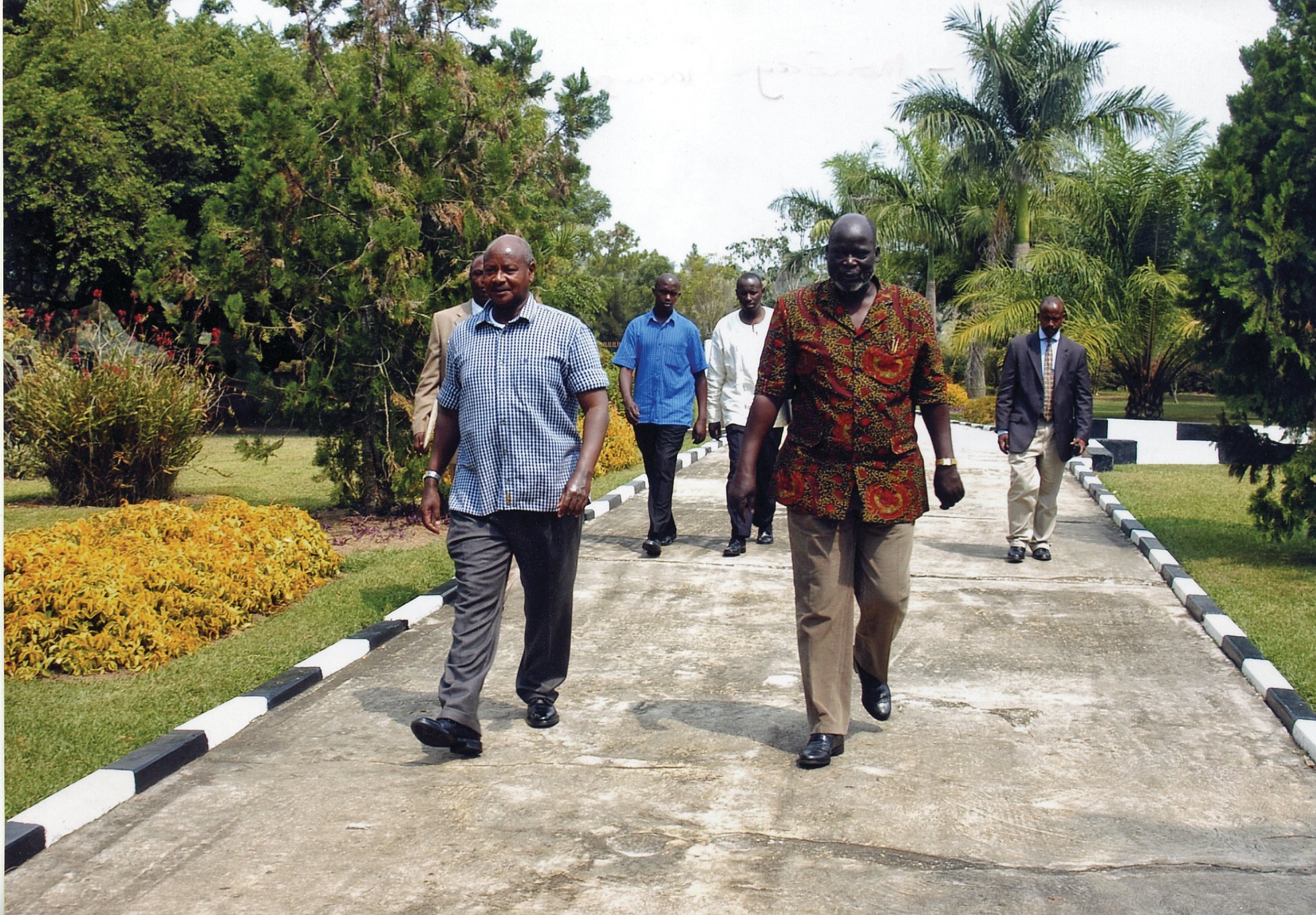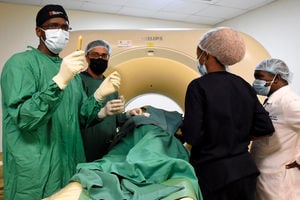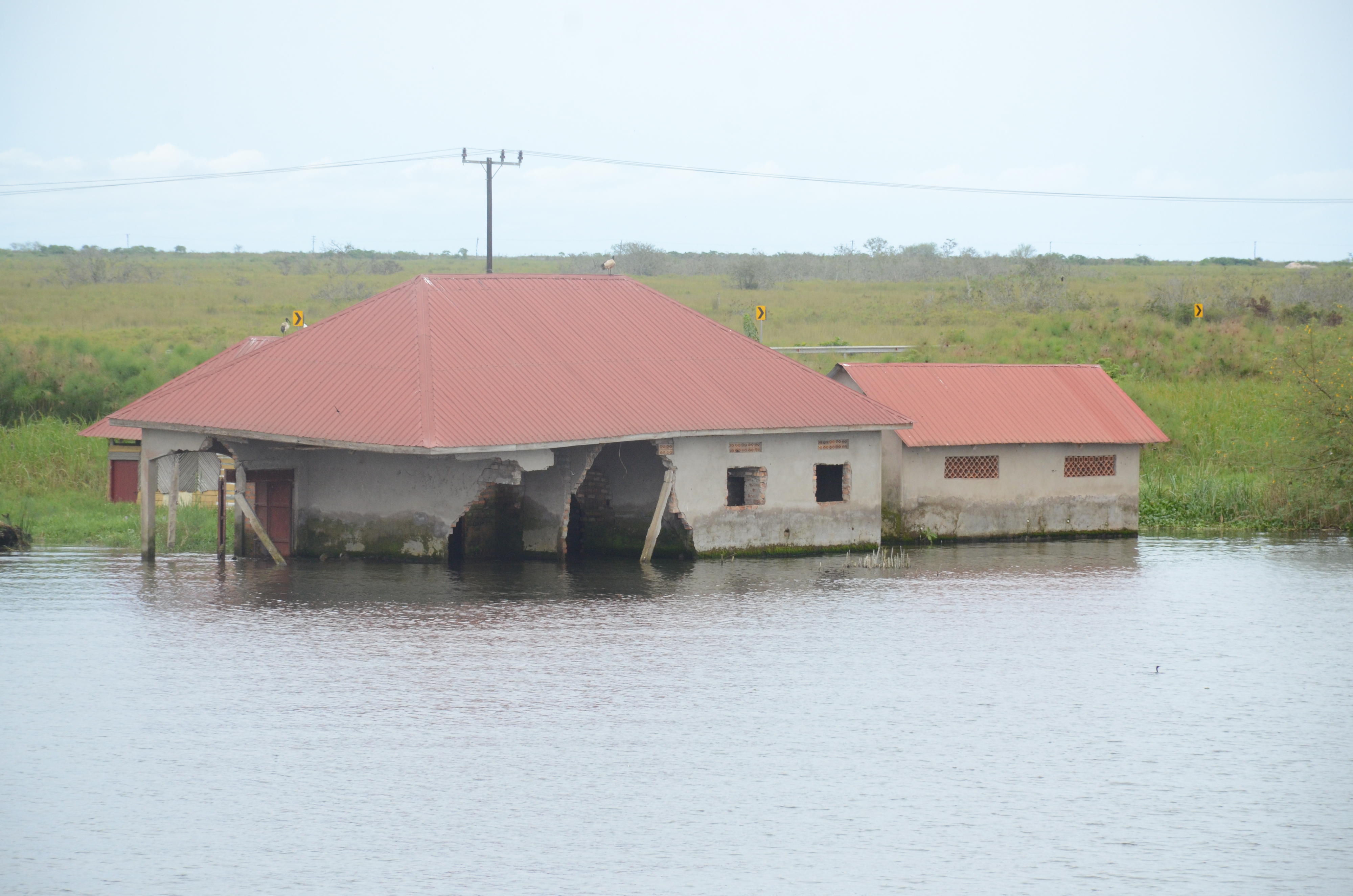Prime
UPDF rewards officers who helped foil coup
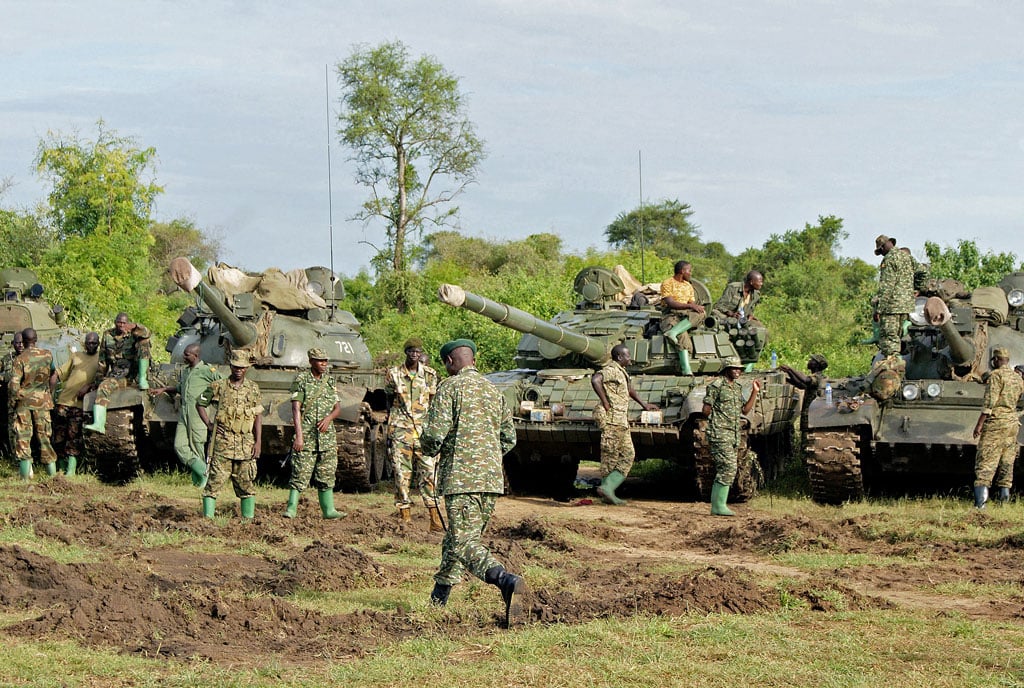
In this file photo. Uganda People's Defence Forces (UPDF) troops assemble beside their tanks in Bor on October 20, 2015. PHOTO/FILE/AFP
What you need to know:
- The UPDF soldiers played a crucial role in thwarting a coup attempt through a multi-pronged military operation and fierce combat engagements.
On December 15, 2013, Uganda People’s Defence Forces (UPDF) soldiers stormed Juba, the besieged capital of South Sudan, to engage putschists, who had staged what President Salva Kiir described as a “creeping coup.”
Cracks began to emerge in the armour of the South Sudan People’s Defence Forces (SSPDF)— largely a patch-up of militias who fought the liberation war against Khartoum— as a political crisis spilled over into the barracks and ignited an ethnic tinderbox.
Fighting broke out at Atla Bara barracks on the outskirts of Juba among the presidential guard Tiger Battalion soldiers, who were largely Dinka and Nuer. This was after President Kiir ordered the commander of the Presidential Guard, Maj Gen Marial Ciennoung, to disarm the troops.
Fighters loyal to the ousted vice president Riek Machar claimed that the officer-in-charge of the stores rearmed Dinka soldiers, especially those from Aweil and Warrap states, the birthplace of Kiir.
With fighting raging across Juba, Kiir abandoned his trademark Stetson hat for military fatigue during a news conference he addressed on national television, where a dusk-to-dawn curfew was imposed. Standing alongside Kuol Manyang Juuk—a historical member of the SPLA/SPLM military high command and then Foreign Affairs minister, Barnaba Marial Benjamin, Kiir said the attackers would be held to account.
“The attackers fled and the armed forces are pursuing them. I promise you today that justice will prevail. Let me repeat that my government will not allow the incidents of 1991 to repeat themselves. I strongly condemn these criminal actions in the strongest terms possible,” he revealed.
Riek Machar, who had been ousted as vice president and fled his residence near the president’s J1 residence on the outskirts of Juba, accused Kiir of staging the coup to mask his dictatorial tendencies.
“My life was in danger, my colleagues were being arrested for no reason. They are not plotters, it was not a coup. Nobody wants that,” he said.

This picture taken on February 20, 2014 shows hundreds of UPDF battle-hardened and heavily armed Special Forces commandos trained from Israel and Russia as they participate in the drills near the South Sudan border. President Museveni used an armoured vehicle to scrutinize the commandos’ preparedness, tactics and motivation" as they prepared for combat against rebels loyal to Riek Machar. PHOTO/FILE/AFP
In the early days of the attack, Nuer officers appeared to gain an upper hand as they captured large swathes of the city, including strategic locations like Juba Airport before fighting spread to the garrison town of Bor, which is the spiritual cradle of the SPLA and birthplace of the late SPLA leader John Garang, and later to the floodplains of the Nile River in Upper Nile and Unity States.
UPDF to the rescue
A week after the conflict broke out, a multi-pronged UPDF force buttressed by a commando unit from the Special Forces Command (SFC) stormed Juba and retook the airport after a fierce firefight as a back-up force of infantry and tanks began to gradually snake its way through Nimule—a border outpost through Nisitu, Juba and later to Bor.
The overall commander of ‘Operation Kalongero’ at the treacherous war-front, who is among those rewarded with a promotion across the decade, was Lt Gen Kayanja Muhanga. He is currently the commander of the Land Forces and sits at the apex of the UPDF leadership.
A battle-hardened soldier, Kayanja by then a Colonel, had previously commanded the battle group eight in Somalia that captured al-Shabaab’s bastions in Mogadishu, including Bakara Market, Mogadishu Stadium, Daynile, Mogadishu University and Afgooye, located in Southeastern Somalia, lower Shabelle in 2011. He was previously deployed in Acholi Sub-region to fight LRA bands in the forested ravines of Pader District and across the gorges of Mountain Rwenzori where he hunted ADF rebels.
Kayanja was deputised by Brig Ham Kaija Atwooki, who is currently the police Air Wing commandant. Atwooki was a Lt Colonel by the time of the deployment. He often flew a helicopter from Juba to the warfront in Bor, Jonglei State.
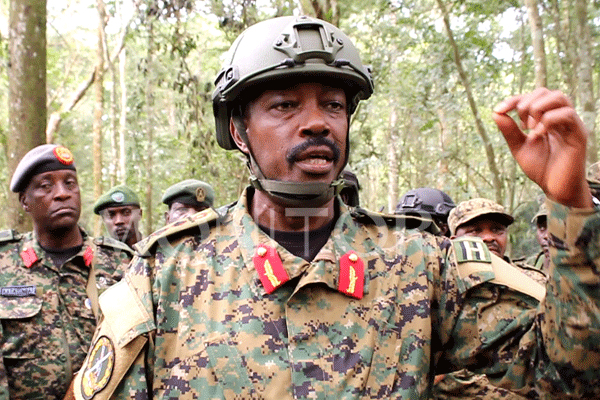
Lt Gen Kayanja Muhanga, the commander of Operation Shujja, addresses journalists in the jungle of Kambi Ya Yua in DR Congo on December 30, 2021. PHOTO/DAVID BUKENYA
The UPDF was ambushed at Pariak located about 30km south of Bor and later at Gemeza on the highway from Juba by Machar’s fighters. Nine soldiers were killed and a dozen wounded. During the fire-fight, a UPDF sergeant killed a Brigadier General who was part of the rebel force.
Bor was previously a scene of the heaviest fighting between the government troops and the White Army led by the late Gen Peter Gatdet, a former militia boss who was among the first SPLA officers to renege and join the rebellion in 2013.
Stench of death
When the UPDF entered Bor, they were met by a stench of death and the charred remains of the town burnt to ashes, which permeated across the shallow graves on the outskirts of the town.
By December 15, 2013 when fighting broke out, the army was led by Gen James Hoth Hai, a Nuer officer, who is a former head of SPLA commandos and surrogate to the deceased leader Garang. He was later dropped amid suspicion and reappointed as Labour minister in 2018.
Kiir gave the position to Gen , a Dinka and former governor of Northern Bahr El Gazel, who had mobilised youth from his backyard in Aweil State to fight Machar’s rebels. On May 9, 2017, Kiir fired Malong—a divisive but popular figure within the Djieng Council of Elders—an ultra-conservative Dinka clique whose sole purpose is to retain power.
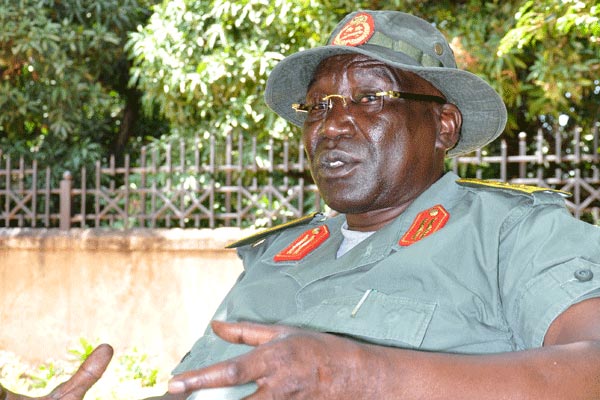
The feared former head of the army, Paul Malong.
An SPLA veteran, Malong had earlier midwifed a truce between Garang and Kiir in Rumbek. This was in 2004 after allegations arose that Garang planned to arrest Kiir and replace him with Nhial Deng Nhial, a scion of William Dheng Nhial—one of the founders of the Anyanya, who was assassinated in 1968 on his way from Rumbek to Tonj.
“The allegation that I was going to dismiss Cdr Salva and arrest him was not only a lie, but it did not even occur in my mind. I was preoccupied with the peace process and not trying to create a crisis. Before the UN Security Council Meeting, I received a telephone call from President Bush who said he now had those who will work with him during the next four years and that I am one of them. President Bush said, ‘John don’t let us down. We want peace before the end of the year’,” read Garang’s statement during the meeting.
On July 8, 2016, Machar survived a shoot-out at J1 presidential palace on the outskirts of the capital but his entire coterie of bodyguards were killed. In the aftermath, president Kiir accused Machar of entering the presidential palace with a concealed pistol, which he planned to use to kill him.
Today, Malong has changed places with Machar. Malong is exiled in Nairobi and has called for the overthrow of Kiir and Machar who he relentlessly pursued from his home at the foot of Jebel Kujur Mountain on the outskirts of the capital in July 2016. Machar returned from the jungles and is now first vice president.
Self-rule
Earlier, in 2011, the people in the south sounded the drum of self-determination and voted overwhelmingly to become independent during a referendum.
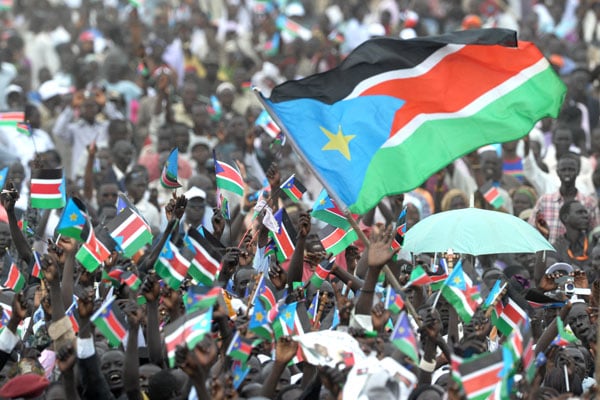
South Sudan separated from Sudan to become the world's newest nation. PHOTO/AFP
On the eve of independence, the howling gales blew across the large expanse to pay respect to thousands of war veterans who fell at the battlefront.
From the war-weary town of Bor— to the oil town of Malakal and Wau the capital of western Bahr el Ghazal, the last fortress of Khartoum’s hegemony in the South— this day brought tears to those who had survived the enemy’s Antonov plane bombings.
Before fighting broke out in Juba in December 2013, a rift within the SPLM political bureau had pitted Kiir against Pagan Amum—a Shilluk and a protégé of Garang who was then serving as the secretary general.
Amum alongside his acolytes like former Foreign Affairs minister Deng Alor Kuol and former chief of staff Oyay Deng Ajak referred to as the group of eleven as these high-ranking officers came to be known were briefly detained by Kiir and later dismissed.
In the first wave of fighting at Gatdet on December 17, revolting soldiers numbering 2,000 converged. They then attacked the city of Bor on December 18. The rebels quickly seized much of the settlement, as locals feared a repeat of the 1991 Bor Massacre.
In 1991, Machar, Lam Akol and Gordon Koang Chuol led an attempted coup against Garang. Machar started SPLA-Nasir, which received covert support from Khartoum. Later, SPLA-Nasir led a slaughter of about 2,000 Dinka men in Bor.
Revenge
The 2013 conflict was a continuation of these ethnic pogroms, posited Uganda scholar Prof Mahmood Mamdani, a member of the African Union Commission of inquiry on South Sudan.
“As part of the preparation, there was a general sprucing-up of the capital—a street sweeping operation to remove litter—by Tiger Battalion a week before the killings. This Lau cleaning, as it was known, was a pretext for Kiir’s loyalists to identify and demarcate areas in Juba that would be targeted when the massacres began.”
Mamdani says Nuer communities in Juba were motivated by a deep sense of grievance—revenge for the December massacres—and the promise of plunder.
In December 2013, as word spread via cellphone that a slaughter of Nuer civilians was going on in the capital, the Nuer youth, 50,000 in all and fresh from a run of campaigns against the Murle ethnicity in 2012, converged first on Bentiu, which they ransacked, and then on Juba.
“Its contingents left a trail of carnage and destruction in the towns and villages they swept through on their way to Juba. When the government retook these towns, there was further carnage and destruction, perpetuating a cycle of revenge. Rape, never before witnessed on this scale in South Sudan, became a regular occurrence in battle zones,” Mamdani revealed.
Promotions
After successfully beating back the attempted putsch in 2013, the UPDF rewarded its soldiers who were part of the mission with promotions. This played out across a decade.
Brig Felix Kulayigye, the Defence ministry Publication Information Officer, said promotions are based on “period of service. Two, period you have spent in the rank. Three, courses you have attended. Four, discipline. Five, political clarity. The level of your ideological orientation.”
Mr Timothy Kalyegira, a journalist and researcher, said it is a conventional practice for armies across the world to be promoted after attending “staff college and cadet training and all this get training and be promoted by courses you do which is one way they continually promote people, but the ultimate test of a typical soldier is in battle.”
He added: “So these generals like the Muhangas and the Late Paul Lokech . Those who proved themselves in battle, I mean what else? If you can be promoted for doing some academic exams in staff college, how about one who has been tested on the battlefield which is the ultimate test of a soldier?”
Soldiers who were part of the mission
Lt Gen Kayanja Muhanga, who previously led Operation Shujaa and is currently the commander of the Land Forces, was a key leader of troops that participated in the South Sudan operation. He was a Colonel during that operation.
Maj Gen Bob Ogiki, who is currently undertaking the National Security and Strategy Course at the Kenya National Defence College was an operations officer at the rank of Lt Col during the mission. He previously served as the 2nd Infantry Division Commander and Chief of Staff, Land Forces.
He once was also the Director of Combat Operations in the Defence ministry, Chief of Staff Uganda Rapid Deployment Capability Centre, Deputy Commandant of Senior Command and Staff College Kimaka, Chief of Staff of African Union Support Mission in Somalia.

From Left to right: Maj Gen Bob Ogiki, Lt Col Abdul Rugumayo and Col Fred K Mwesigye. PHOTO/COMBO
Ogik joined the army in 1995 after completing the basic military training course from the School of Infantry in Jinja. Two years later, he emerged the best student in his class for his Officer Cadet Course in Monduli, Tanzania, in 1997.
An experienced Director of Operations with a demonstrated expertise in Intelligence analysis, operations management and planning, and international relations, Ogiki has a Master of Arts (MA) in Defence Studies from King’s College London.
Brig Paul Muhanguzi is among the officers who participated in the conflict under the Infantry Battalion at the rank of Lt Colonel.
He is the acting commander of the 2nd Division based at Makenke in Mbarara and was previously deputy commander at the 2nd Division and served as a commanding officer of 35 battalion under battle group 15 deployed in Somalia, 2016.
Lt Col Abdul Rugumayo, the overall intelligence officer for the mission, who has been promoted to the rank of Brigadier and is currently serving as the Deputy head of the Chieftaincy of Military Intelligence (CMI).
Brig Moses Kwikiriza, who is currently the head of the Chieftaincy of Mubende Rehabilitation Centre, was among the operation commanders based at Juba Airport at the rank of Colonel. He previously served as the Commander of the Mountain Division in western Uganda.
Col Asaph Mweitese Nyakikuru—the commander of the SFC commando unit was among the key military strategists during the mission. He was by then a Major. He previously led an SFC commando team on a special assignment in Somalia between 2012 and 2013.
Col Fred K Mwesigye currently heads operation Tokora, which is fighting criminality in Kampala Metropolitan Area. He was a field administrative officer during Operation Kalongero at the rank of Lt Colonel. He previously served as the commandant of the First Infantry Battalion in Somalia.
Col Badru Lumumba, who is currently the commander for the 407 Infantry brigade based in Karamoja Sub-region, was a major during the mission in Juba.
Battalion and component commanders
Infantry Battalion, Lt Col Jowahabu Ndaula
Infantry Battalion, Maj Robert Mugizi, now Lt Colonel
Infantry Battalion, Lt Col Wyclef Bossa
Infantry Battalion, Lt Col Nasur Kubet
Infantry Battalion, Lt Col Abubaker Achaga, retired as a Colonel
Artillery Brigade, Lt Col Ssezi Mugasera
Major Robinson Abeka promoted to Lt Col
Other key staff officers
Operation Intelligence Officer, Maj Ibrahim Mutabazi, now Lt Col
Logistics Officer, Lt Col Stephen Musana, now Colonel and Principal Staff Officer logistics under Operation Shujja.
Maj Hassan Kalungi, Political Commissar, now Lt Col and Division Political Commissar, Field Artillery Division, Masindi
Counter Intelligence Officer, Capt Patrick Kubayo, now Lt Col under the Chieftaincy of Military Intelligence
Legal officer, Capt Ketigan Mugisha now Major serving as 3rd Division Assistant Prosecutor
Public Relations Officer, Capt Isaac Oware, now a Major and serving as a Public Information Officer, 3rd Division
Finance Officer, Lt Lawrence Ssentongo, now Major

